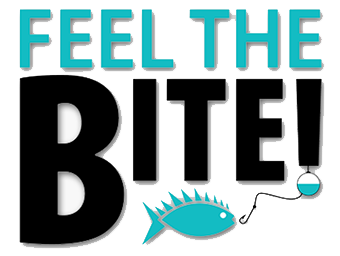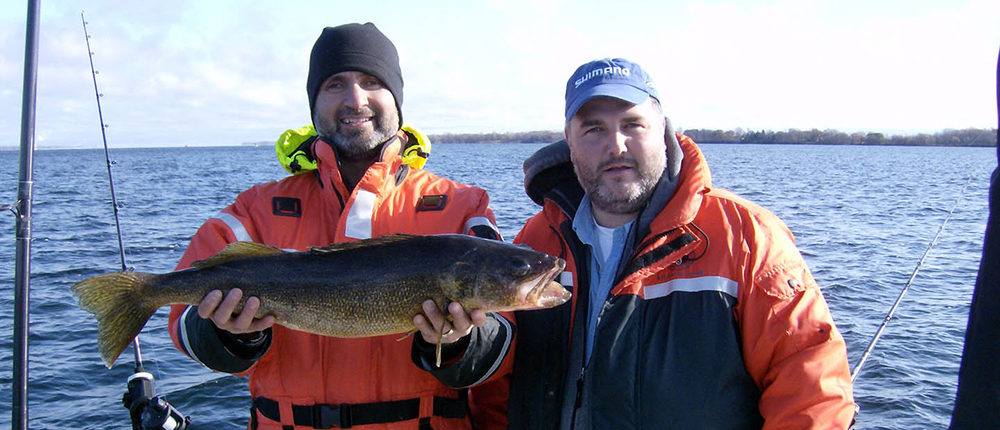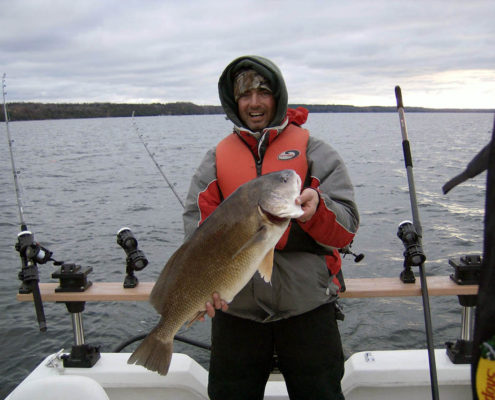Walleye on the Bay of Quinte
Late fall is when Walleye that have roamed Lake Ontario all summer return to the Bay of Quinte to pass the winter and prepare for the spring spawn run up the rivers. Upon arriving in the Bay, they are greeted by both a plentiful supply of baitfish, and a dedicated group of sport fishers from both sides of the U.S.-Canadian border. Making the three-hour trip from Ottawa to take part in this amazing fishery may seem extravagant, but if you time it right, the pay-offs are 10lb+ Walleye. Jim Wilson, Scot Campbell and I decided to take the gamble that the fish would be in when we set off for two days of fishing in early November.
Weather is the key when it comes to catching Walleye on the Bay of Quinte. Too much sun, warm weather and calm water may seem like a blessing when fishing in Canada in November, but this generally doesn’t bode well for the Walleye bite. These fish feed mainly during low-light conditions so a good chop and over-cast skies are preferable. Unfortunately, this often also means wet snow and ice, which can make boat launches treacherous, and for cold fingers on the water. A flotation suit certainly helps to stay dry and warm.
We launched the Blind Fishing Power Cat Saturday morning at around 7:30 after driving three hours. By 8:00 our trolling spread master, Jim, had begun working his art. Because we were fishing in the mouth of the Bay, the two lines per fisher rule was in effect. The six Orca rod holders from Scotty fastened to an 8-foot Oak plank mounted on the stern provided plenty of configuration options.
Walleye have two specific characteristics that make them slightly more challenging to troll for than Salmon. The first being that they shy away from boats making the use of planer boards essential. Planer boards are devices that function similar to a miniature ski; carving away and to the side of the boat when towed and bringing with them the mainline and presentation. Some of the boats on the water had dedicated masts equipped with reels and line specific for releasing and retrieving dedicated planer boards, while others like us used an in-line board that snapped directly on to the main line of the trolling rod.
Jim was able to send two rods with planer boards off each side of the boat, with the two outside rods trolling deeper than the two inside rods. This strategy reduces line tangles.
The second characteristic Walleye have that needs to be respected is their inability to release pressure from their swim bladder. This means catching Walleye at depths greater than 30-feet most often always results in the fish experiencing hyperboyancy, which is the inflation of their swim bladder and their consequent inability to return to the depths. (Salmon and Lake Trout are able to “burp” excess gas as they come to the surface, but not so Walleye, Pike, Bass and most all pan fish.)
Instead of downriggers we used snap weights attached directly to the main lines of rods five and six, which were trolled directly off the back of the boat using a technique referred to as “flat lining”. The weights take the lure to the desired depth relatively quickly, which is important when trolling six or more lines if tangles are to be avoided.
Reels with line counters such as Shimano’s Tekota 300LC simplifies creating consistent troll patterns by providing the fisher the ability to run different depths and then consistently hone in on the depth that’s producing. Not being able to see the numeric display, I count the passes of the line guide on the front of level wind reels. Rods capable of supporting the strain of a planer board are necessary, and at the same time should have a sensitive enough tip to relay knowledge back to the fisher on how the board and lure are running. You also want a rod that will flex sufficiently to absorb the strong head shakes these large Walleye are famous for without tearing the hooks from their mouths. Shimano has a line of telescoping Walleye-specific rods on the market under their Compre Brand.
It took about an hour before the first strike came, and it just so happened that I was first up. Setting the hook is not part of the fish-playing strategy. These fish set the hook themselves when they bite. Pumping the rod to take in line is also not advised as it is more likely to lead to fish becoming un-hooked. A steady retrieve with plenty of pauses is recommended to allow the fish to expend surplus energy prior to being netted. A large net with a long handle, (10-foot extension), is a good idea as playing the fish takes place off the stern. After a good fight with plenty of headshakes, I reeled in my largest ever Walleye weighing in at 10lb 2 ounces.
The Rapala “Dives To” series of lures offers a broad selection of colours and trolling depths that can match most hatches. More traditional spoons and spinners can also produce, as can jigging vertically. However, jigging for the resident smaller Walleye is generally something that is turned to as a last resort when it becomes obvious the bigger migratory Walleye just won’t cooperate. One should exercise caution when jigging as you don’t want to be targeting Walleye in depths greater than 30 feet unless your goal is to take home a few for the dinner table.
The next two rods to go off caught Sheephead. While not prized as either sport fish or table fair, these freshwater Drum can put up quite a fight. Scot and Jim landed back-to-back 10-pounders.
We fished for nine hours on day one and another six on day two. With the calm water, intermittent sun and warmer temperatures the bite proved to be challenging with three Walleye being caught in total. Once again, the fall weather is proving to be a bit too warm and settled to bring in the large Walleye early. No doubt, by the time they have moved in winter will have pretty much arrived; making safely trailering boats impossible. Once things ice up, we’ll have another chance at catching these record fish.






